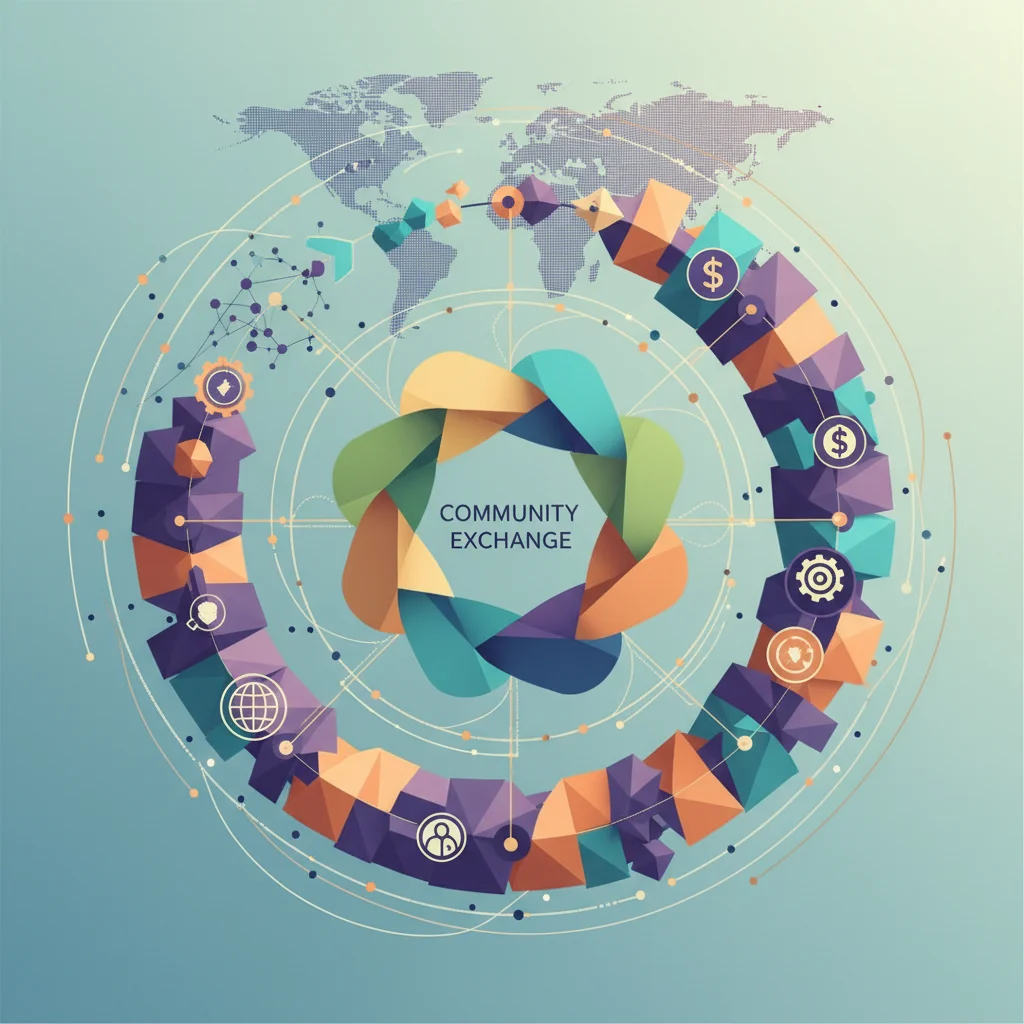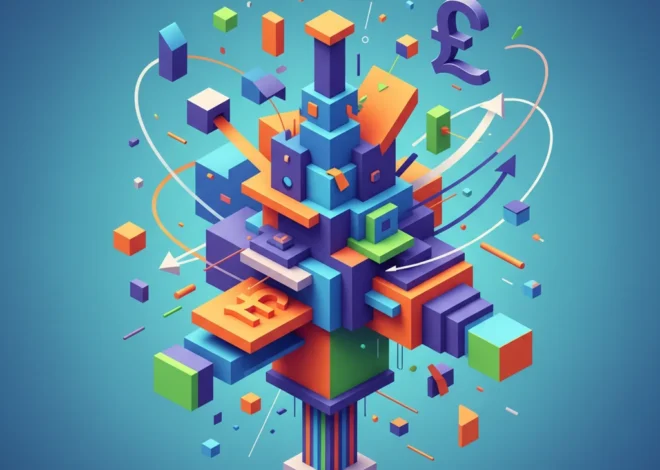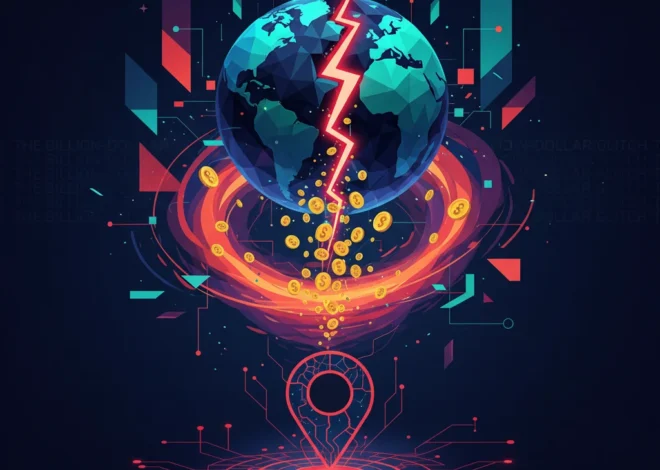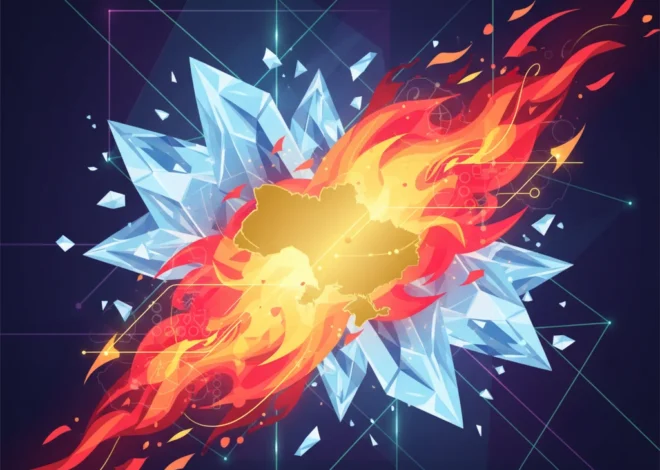
From Community Exchange to Global Economy: The Untapped Financial Power of the Circular Model
In a quiet corner of a county, a local “face-to-face” freecycle event is gaining momentum, recently expanding to its third location due to popular demand. On the surface, this is a heartwarming community story: neighbors helping neighbors, reducing waste, and giving pre-loved items a new home. While commendable, a deeper analysis reveals that this small-scale initiative is a microcosm of one of the most significant and disruptive economic shifts of our time: the transition from a linear to a circular economy. For astute investors, finance professionals, and business leaders, understanding the principles driving this local event is crucial to unlocking the next wave of value creation, technological innovation, and sustainable growth in the global economy.
This isn’t just about second-hand goods; it’s a tangible demonstration of a system that designs out waste, keeps products and materials in use, and regenerates natural systems. As we peel back the layers, we find a powerful new framework for investing, a frontier for fintech, and a fundamental reimagining of modern economics that will reshape industries from manufacturing to banking.
The Linear Model’s Ticking Clock: A Flawed Economic Paradigm
For centuries, the global economy has operated on a simple, linear model: “take, make, dispose.” We extract raw materials, manufacture products, and then discard them as waste when their useful life is over. This system powered the industrial revolution and created immense wealth, but its fundamental flaws are now creating systemic risks. Resource scarcity, price volatility in the commodity markets, and the staggering environmental and financial costs of waste management are putting immense pressure on corporate balance sheets and national economies.
The traditional stock market often rewards companies for volume, encouraging a model of planned obsolescence where more consumption equals higher profits. However, this short-term view ignores the long-term liabilities being created. According to the World Bank, global annual waste generation is projected to increase by 70% by 2050, reaching a staggering 3.4 billion tonnes (source). This is not just an environmental issue; it is a profound economic inefficiency and a looming crisis for global supply chains.
The AI Chart-Topper: A Sound Investment or a Soulless Echo in the Market?
The Circular Economy: A Systemic Shift in Value Creation
The freecycle event, in its simplicity, embodies the core principles of a circular economy. Instead of an “end-of-life” for a product, there is a “next life.” This concept, when scaled, transforms our entire economic architecture. The Ellen MacArthur Foundation, a leading authority on the subject, defines the circular economy as a model based on three principles: eliminate waste and pollution, circulate products and materials at their highest value, and regenerate nature (source).
To better understand the paradigm shift, consider this direct comparison:
| Metric | Linear Economy (“Take-Make-Dispose”) | Circular Economy (“Reduce-Reuse-Regenerate”) |
|---|---|---|
| Resource Flow | Unidirectional: from extraction to landfill | Cyclical: materials are looped back into the system |
| Value Proposition | Based on selling new units (volume) | Based on performance, access, and asset longevity (value) |
| Business Models | Planned obsolescence, single-purchase sales | Product-as-a-Service (PaaS), refurbishment, remanufacturing |
| Financial Risk | High exposure to resource price volatility and supply chain disruption | Reduced dependency on raw materials, more resilient supply chains |
| Asset Management | Assets lose all value at end-of-life | Assets retain residual value as a source of future materials |
This table illustrates that the circular economy is not just about recycling; it’s a complete rethinking of how products are designed, manufactured, sold, and managed throughout their lifecycle. This has profound implications for corporate strategy, finance, and investment analysis.
Investing in Circularity: The New Financial Frontier
For the investment community, the circular economy is moving from a niche ESG (Environmental, Social, and Governance) category to a core strategic theme. The opportunity is twofold: identifying companies that are leading the transition and recognizing the risks in those that are lagging. Investment in this space is surging, with a report by Accenture highlighting a potential $4.5 trillion economic opportunity by 2030 by adopting circular models (source).
Key investment areas include:
- Innovative Materials: Companies developing biodegradable plastics, advanced composites, and materials designed for easy disassembly and reuse.
- Reverse Logistics: The complex supply chain of bringing products back from consumers. This is a massive growth area for logistics and tech companies.
- Digital Platforms: Marketplaces for second-hand goods, material trading platforms, and software for tracking product lifecycles.
- Product-as-a-Service (PaaS) Innovators: Companies shifting from selling products to selling outcomes. Examples include Signify (formerly Philips Lighting) selling “light” instead of lightbulbs and Michelin selling “kilometers” to trucking fleets instead of tires. This model aligns the company’s interest with durability and efficiency, the cornerstones of circular economics.
The Poisoned Chalice: Why the BBC's Top Job is a Case Study in Corporate Governance Failure
The Role of FinTech and Blockchain in Powering the Transition
A truly global circular economy cannot function without a sophisticated digital and financial infrastructure to support it. This is where financial technology (fintech) and blockchain become critical enablers. The anonymous, trust-based exchange at a local freecycle event needs to be replicated at a global, industrial scale, and technology is the only way to do it.
Consider the concept of a “Product Passport.” Using blockchain, a company can create an immutable digital record for every item it produces. This passport would track:
- The origin and composition of all raw materials.
- The energy used in its manufacturing.
- Every repair, update, or component replacement.
- Its ownership history.
This transparent record has transformative implications for finance and trading. A batch of recycled plastic with a verified blockchain history confirming its purity and origin is far more valuable than one from an unknown source. Financial institutions could use this data to offer better lending rates to companies with transparent, circular supply chains. Insurers could more accurately price risk. In the future, we may see commodity trading platforms not just for virgin aluminum or crude oil, but for “Grade-A Recycled PET Plastic” or “Certified Refurbished Lithium-Ion Battery Modules,” all tracked and verified on a blockchain.
This level of transparency and verification turns waste from a liability on a balance sheet into a tradable, valuable asset, creating new markets and sophisticated financial products. This is the cutting edge where financial technology meets industrial sustainability.
The Kardashian Premium: Deconstructing the Billion-Dollar Math Behind Skims' Valuation
Macroeconomic Implications: Reshaping the Global Economy
The shift to a circular model is not just a microeconomic phenomenon; it has the potential to reshape the entire macroeconomic landscape. By reducing reliance on the extraction of virgin materials, which are often concentrated in geopolitically sensitive regions, nations can enhance their economic security and resilience. It could dampen the inflationary pressures caused by commodity price shocks, a constant concern for central banking authorities.
Furthermore, a circular economy is inherently more labor-intensive in areas like repair, refurbishment, and reverse logistics, potentially creating new jobs to offset those lost in traditional extractive industries. It forces a re-evaluation of how we measure economic success. GDP, which largely measures the throughput of goods, may become a less relevant indicator in an economy that prizes asset longevity and utilization over sheer production volume. Economists and policymakers will need new models to understand and guide an economy where value is preserved, not destroyed.
Conclusion: From Local Insight to Global Strategy
The expansion of a community freecycle event, like the one reported by the BBC, is more than just a local news item. It is a powerful signal from the ground up. It demonstrates a growing public consciousness about waste, value, and consumption that is now being mirrored in the most sophisticated boardrooms and investment committees in the world.
For business leaders, the question is no longer *if* the circular economy will impact their industry, but *how* they will adapt to lead the charge. For investors and finance professionals, it represents a fundamental re-evaluation of risk, value, and growth. The principles at play in that small community exchange—resourcefulness, value preservation, and interconnectedness—are the very same principles that will define the most resilient and profitable enterprises of the 21st century. The time to start building the financial models, investment theses, and technological platforms for this new economy is now.


